Hot Chocolate Mantle Convection Demo
This demonstration is a fun and relevant way to show mantle convection and it affects on plate tectonics. Time:
Materials:
Optional materials
* In this demo I am using a digital camera connected to a digital projector. It will be just as effective to connect a camera to a TV. I have also borrowed the demonstration table with overhead mirror from home economics. |
|
| Hot plate with camera. |  |
Fill the pot with milk. A good start is about 3/4 of a gallon. Do not add all of your milk since the final product will be boiling hot and it is good to have reserve to cool down the mix. It also cuts down on heating time if you let the milk sit at room temperature for an hour or so. "This represents the mantle material. The mantle is very hot rock and flows very slowly over time like a goop. To see the convection in a shorter time we're using this which will flow in a similar way in only one period. After many trails and errors we've found that milk makes the best approximation for this behavior." |
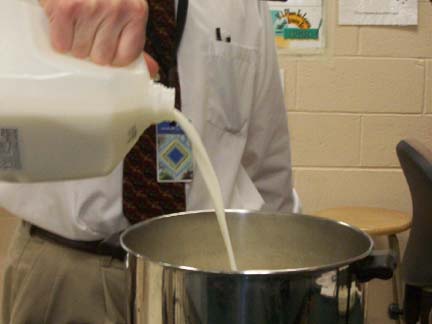 |
| Once the milk is in the pot, the heat can be turned on to start the heating process. Carefully spread the mix on the top of the milk. Try to get it as uniform as possible. It usually takes about a half inch of mix to do the job. Very gently smooth out the top with the scoop trying to avoid shifting the mix and causing cracks. The ideal demo will be flat and free of cracks or wet spots. The edges usually need a slightly thicker layer to avoid seepage. | 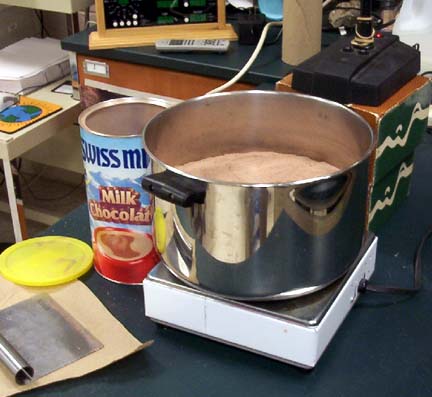 |
| All ready to go! | 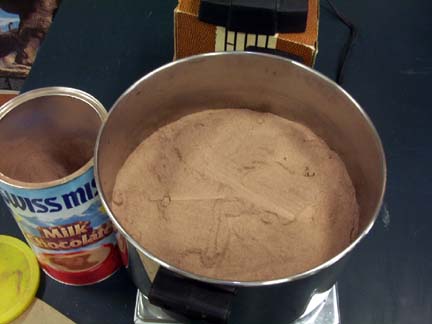 |
| If you have a clean thromometer handy it helps to monitor the progress. Very little will happen for 20-25 minutes so have the students do something else such as a worksheet, quiz, or text work. Things will start to happen around 87 degrees celsius. |  |
"This large piece is crust is similar to what happened during Pangaea. The heat in the mantle had no place to vent, so the heat continued to build up." |
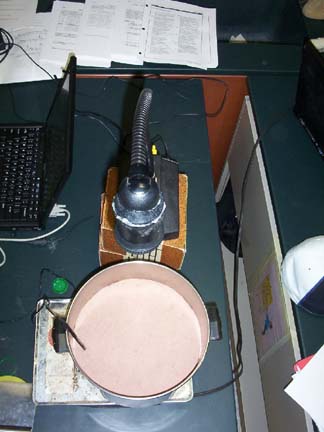 |
| Once the temperature gets near 90 degrees cracks and hot spots start to appear. These could represent divergent plate boundaries and volcanic eruptions. Careful observers will see the cracks form and widen. A laser pointer helps here. | 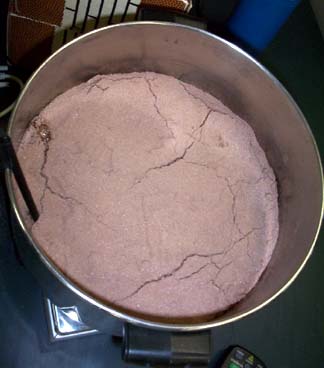 |
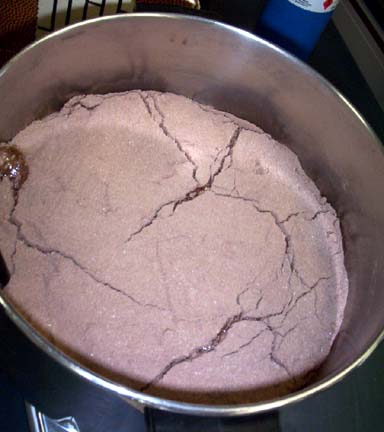 |
|
| With a little luck and imagination you can point out subduction if any plates sink or get flooded. | 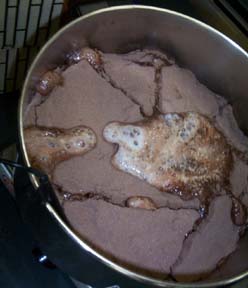 |
| Mix up the cocoa and ladle it out to students. It will be very hot so it will need to be mixed with cold milk which is fine because to mix tends to come out a little strong. Add marshmallows if desired. | 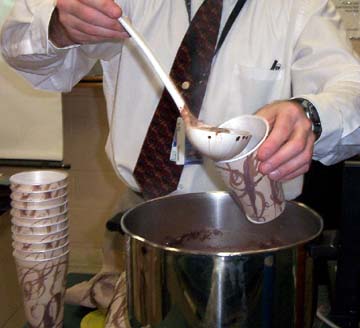 |